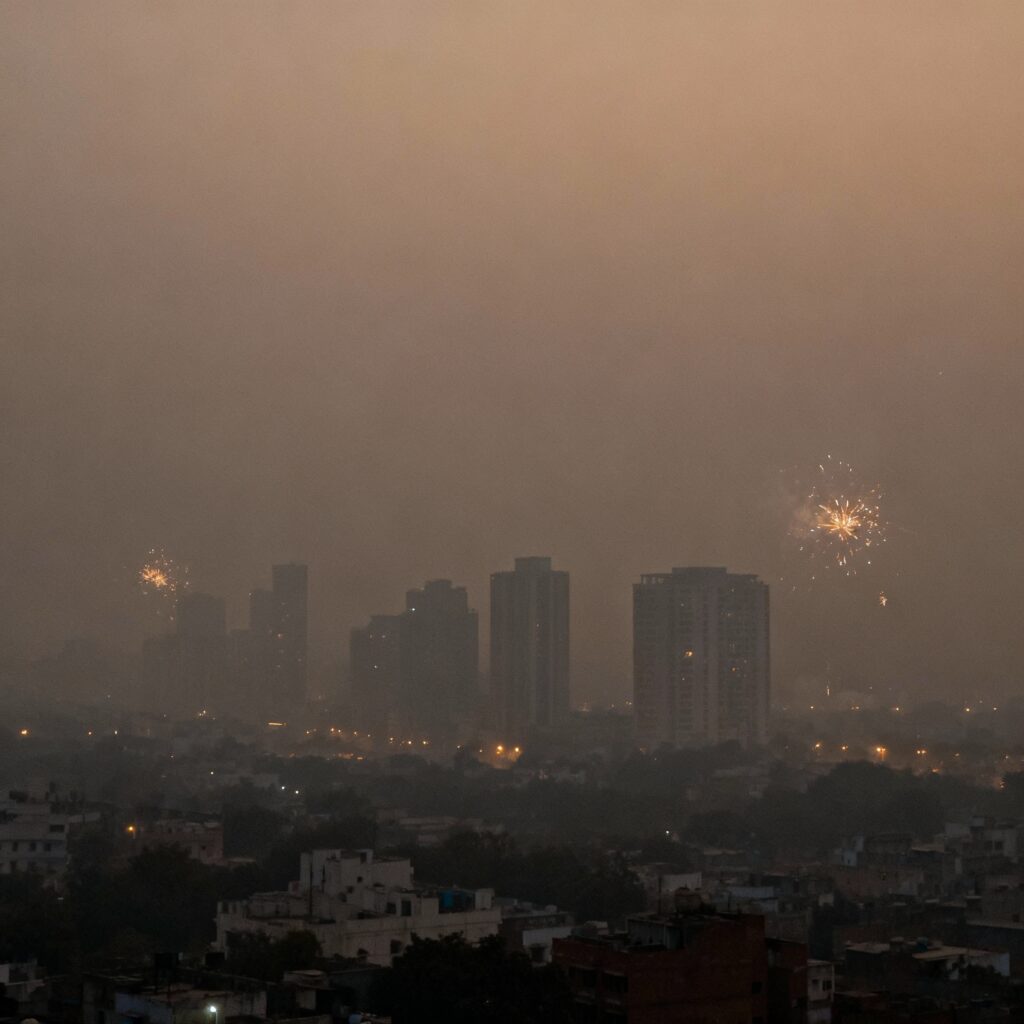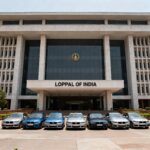As India celebrated the festival of lights on Monday night, Delhi woke up under a thick, acrid haze that dimmed the city’s post-festive glow. Firecrackers, though banned in several areas, lit up the skyline, leaving behind a toxic mix of smoke and particulate matter that pushed air pollution levels to severe highs. According to the Central Pollution Control Board (CPCB), the city’s overall Air Quality Index (AQI) registered above 395—classified as “Very Poor”—with several hotspots reporting readings surpassing 450.
A City Wrapped in Smog
By dawn, Delhi’s iconic landmarks—from the India Gate to the Akshardham Temple—were barely visible through the smog. Residents reported irritation in the eyes and throat, with many opting to work from home to avoid exposure. The Indian Meteorological Department (IMD) confirmed that weather conditions remained unfavorable, with calm winds and low temperatures trapping pollutants near the surface. The Graded Response Action Plan (GRAP) Stage III was promptly invoked by the Commission for Air Quality Management (CAQM), limiting construction activities and ordering schools to suspend outdoor activities.
Spike in Fire Incidents
Delhi Fire Service reported over 400 fire-related calls through the night, a stark reminder of how Diwali’s celebrations can stretch emergency services to their limits. Short circuits and coordinated cracker burns in congested neighborhoods of Laxmi Nagar, Karol Bagh, and Rohini were among the primary causes. Thankfully, no major casualties were reported, though property loss in parts of East Delhi was considerable. Senior officials lauded quick responses from local teams that contained several potential disasters within minutes.
Hospitals See Rise in Respiratory Cases
The city’s hospitals also witnessed a noticeable surge in patients complaining of breathing difficulties, especially the elderly and children. Experts at the All India Institute of Medical Sciences (AIIMS) noted a 15% spike in respiratory distress cases compared to last week. Dr. Randeep Guleria, former AIIMS director, stated, “Each year after Diwali, we see this pattern repeat. Prolonged exposure to this air equals smoking nearly 15-20 cigarettes a day. Delhi is suffering from an air public health emergency.”
Crackdown and Controversy
Despite the National Green Tribunal (NGT) and Delhi government’s ban on the sale and use of crackers, enforcement remains weak. Hundreds of online vendors reportedly flouted the restrictions, supplying fireworks disguised as “green crackers.” Delhi police have registered over 250 FIRs, but critics argue enforcement usually comes too late to make an environmental difference.
Environmental activists, including members of Greenpeace India and Care for Air, renewed calls for systemic reforms. “Bans cannot work in isolation,” said activist Vimlendu Jha. “We need awareness campaigns, cultural alternatives, and accountability from enforcement agencies—not blame-shifting.”
Way Forward
As the gray skies linger, meteorologists predict a marginal improvement in air quality only after light showers expected later this week. Authorities continue to urge residents to use public transport, avoid open burning, and limit outdoor activities. However, for many Delhiites, this post-Diwali pollution isn’t just a seasonal inconvenience—it’s a symbol of a city struggling to breathe under the weight of its own celebrations.
The festival of lights has once again cast a shadow of smog over Delhi. Until cultural habits evolve and sustainable practices take root, India’s capital may keep waking up to the aftermath of joy laced with haze.



